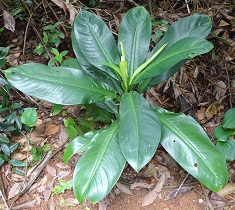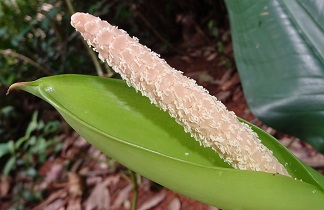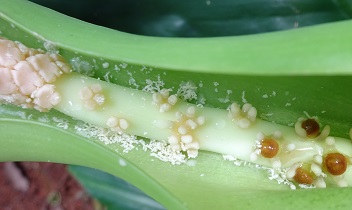| Home | Nature Weekly Index |
26 April 2015 | Dieffenbachia (Dumbcane) |
There is this column in the Life section of the Straits Times that answers readers' questions related to plants. The column goes by the title "Root Awakening" and is usually placed in the last few pages of that section though it may go missing in some weeks. It is authored by Wilson Wong who runs the Green Culture Singapore website. I have been faithful reader of this column as it does provide me some leads on plants.
On April 11, I saw a familiar aroid picture in the column. It was one that I had been looking high-and-low for its botanical name. It turned out to be a cultivar of Dieffenbachia seguine (Dumbcane), a commonly cultivated aroid.
I first encountered this cultivar in September 2012 when I visited a friend's home. One month later, I found another healthy specimen in the wild at Mandai area. A year later in September 2013, I saw another one planted in the park near my place; which gave me the chance to observe the plant regularly. Over the years, I thought I got a name for it but was proven wrong each time. I was glad that this Saturday column had helped to solve this naming puzzle.
Flowers of aroid gather on a rod-like spike called spadix with the male flowers at the top portion and the female flowers at bottom region. With this renew interest on the Dumbcane, I went to the park yesterday to take a closer look at its male and female flowers. Besides this lone cultivar, the park was planted with many conventional Dumbcane. The male flowers are totally white and appeared like pieces of white tiles. The female flowers have a different appearance; a greenish lump with an orange top surrounded by uneven elevated white structure which I assumed are the sepals or petals. Most of the time, the female flowers were hidden in the spathe (a modified leaf) while the white male flowers is exposed.
The flowers of the Dumbcane below might look slightly different from that of the cultivar above. But, they were likely featuring different stages of development instead of real differences.
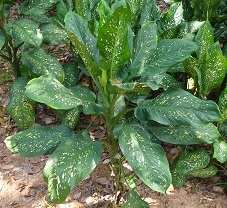
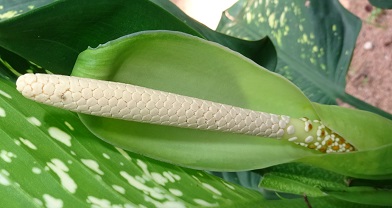
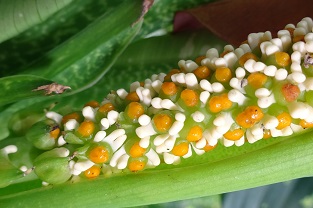
While searching for more information on this cultivar, I came across a Dieffenbachia species (Dieffenbachia longispatha) that looked very similar to the cultivar except for the length of the leaf stalk. So, the aroid may be Dieffenbachia longispatha instead of a cultivar. There was hardly any information on this cultivar in the Internet except for a few look-alike pictures.
